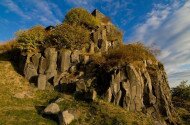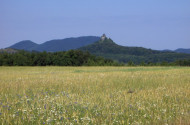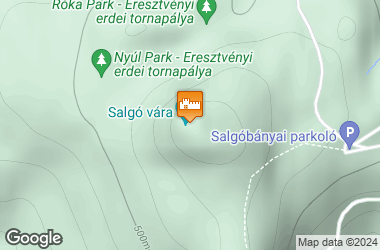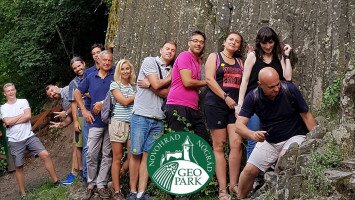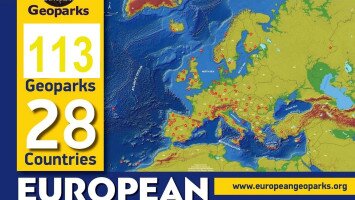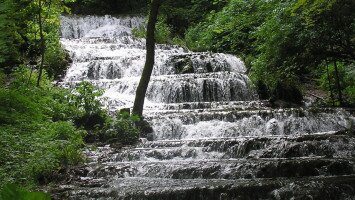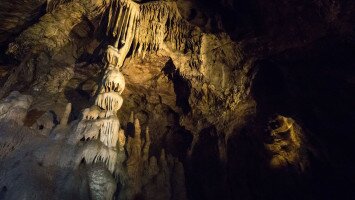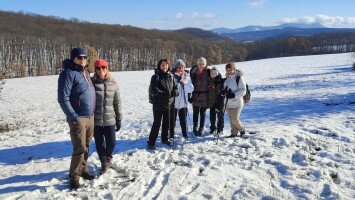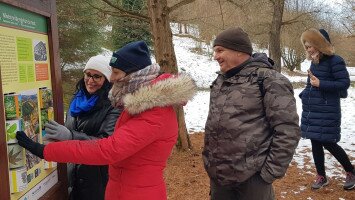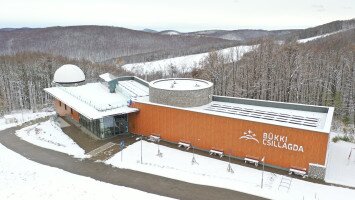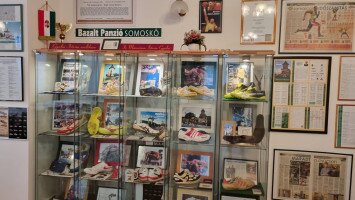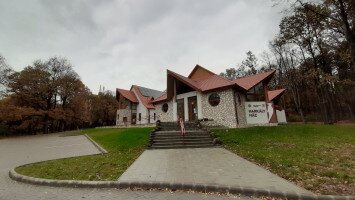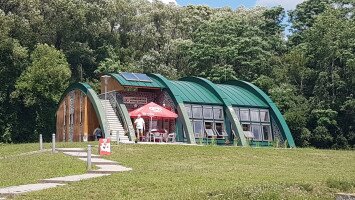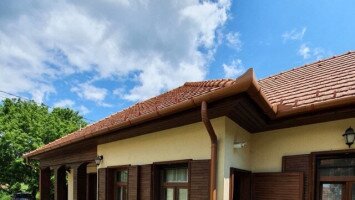
A későromán világi építészet egyik legszebb példája
Fekvése
Salgótarjántól északkeletre, egy 625 m magas vulkáni kúpon találjuk Salgó várát. A név jelentése fénylő, ragyogó.
Kialakítása
A salgói várat valamikor a 13. század végén, vagy a 14. század elején építették.
A vár alapját egy 625 m magas sziklacsúcs adja, melyet zsákként egymáshoz préselődő bazaltoszlopok alkotnak. A keskeny sziklagerinc legmagasabb pontján épült a 7,5x9,5 m-es külső méretű, de közel 2 m-es falvastagságú, téglalap alaprajzú torony. Ehhez kapcsolódott kezdetektől fogva a keskeny, közel 30 m hosszú, íves alaprajzú, a sziklagerinc mentén körülfalazott várudvar.

Metszet a Vasárnapi Újság 1867. évfolyamában
Salgó azon ritka erősségek sorát bővíti, ahol feltételezhetően sosem állt egymagában a torony, a várudvarral mindig is szerves egységet alkotott. Ezt nem csupán keleti sarkainak jellegzetes lekerekített formája bizonyítja, hanem az is, hogy az északnyugati sarkon úgynevezett bekötőkövek állnak és jelzik a torony és a várfal egykorúságát.
Északi falában állt valamikor az az egyszerű csúcsíves, kőkeretes, keskeny várkapu, melynek ma pontos másolatán keresztül lehet belépni a felső várba (az omlásrétegben megtalált eredeti homokkő darabok nem voltak visszaépíthetőek egykori helyükbe, a küszöböt leszámítva). Eredetileg a keret egy vastag fa ajtót foglalhatott magába.
Úgy tűnik, hogy kezdetben a falazott udvaron belül nem voltak gazdasági vagy lakóépületek, legalábbis maradványaikat nem találták meg a régészek. A várfal egykori magasságát sem ismerjük, s ugyanez vonatkozik a vártoronyra is, melyből csak a legalsó szint falcsonkjai maradtak ránk.
A ma látható, tetővel fedett falkoronák már a két világháború között épített kilátóból származnak. Az ásatást vezető régész, Feld István nem tudott biztos magyarázatot adni arra, hogy az udvar felőli, nyugati falban meglévő nagy áttörés egy korai ajtó helye volt-e, vagy egy késő-középkori utólagos átalakítás eredménye. A legtöbb hasonló toronynál a bejárat általában az első emeleten volt.
A legtöbbször börtönnek használt földszinti térbe gyakran csupán a gerendafödémbe vagy a boltozatba vágott nyíláson át lehetett bejutni. A legkorábbi bővítés a torony alatti vízgyűjtő ciszterna lehetett, mely az egyik legfontosabb eleme volt minden hegyi várnak. Nem csak szomjuk enyhítésére gyűjtötték a vizet, legfőbb szerepe a váratlanul fellobbanó tüzek eloltásában volt. Salgón, akár a többi várban a kövön kívül a legfőbb építőanyag a fa volt és a kiszáradt faszerkezet egy pillanat alatt lángra kaphatott és megfelelő mennyiségű víz, illetve jól megszervezett oltás nélkül órák alatt porig éghetett.
A 15. század utolsó évtizedeiben, és a 16. század elején került sor a vár jelentősebb bővítésére (a Szapolyai-birtoklás alatt). Ekkor emelték az alsóvárat a hegycsúcs nyugati pihenőjén, valamint a korai vármag addig nyitott udvarrészét is lakószárnnyal építették be.
Az, hogy a birtokos nem itt lakott, természetesen nem zárta ki, hogy új lakóépületeket emeljenek, hiszen a vár urát képviselő várnagy rendszerint a várban tartózkodott, az őt megillető körülmények között. A termények tárolására is minden bizonnyal felmerült egy raktárakat, istállókat magába foglaló alsóvár iránti igény.
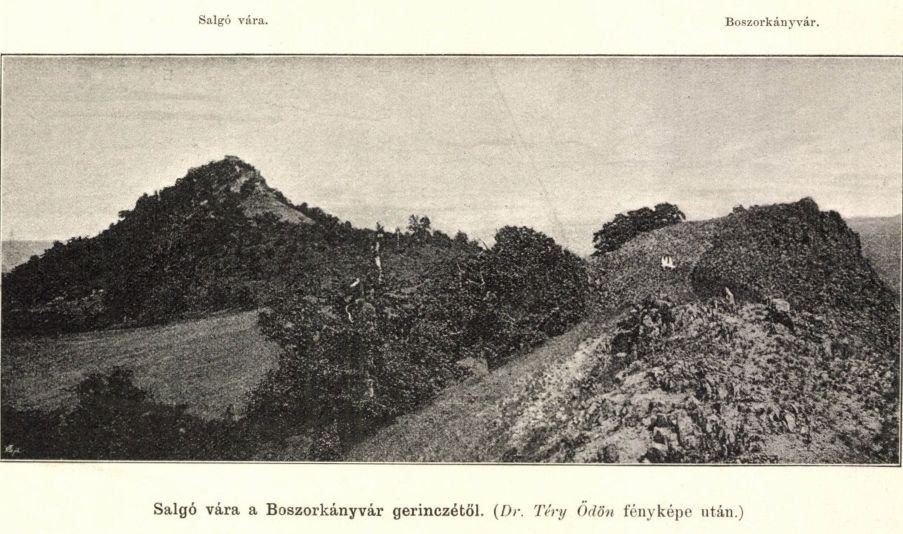
Salgó vára 1894-ben. Fotó a Turisták Lapja című folyóiratból
A magas sziklagerincet elfoglaló felsővárat egy jóval alacsonyabb szinten, mintegy félkörívben körülölelő alsóvár külső falát már javarészt feltárták, de építésének idejére a 2002. évi ásatások eredményei adtak támpontokat. A fal nyugati oldalán belül egy vastag földréteget határoztak meg, melyet a fal megépítését követően egy természetes sziklahasadék feltöltésére hordtak oda. Itt találták meg a régészek (sok kerámia mellett) I. Ferdinánd 1528. évi ezüst dénárját. Mindezeket összevetve Feld István megállapította, hogy az alsóvár jelenlegi külső falának építésére csak a Szapolyai-birtoklás után kerülhetett sor.
Szintén a 16. században épülhetett a sziklagerinc délkeleti oldala, azaz a korai nagy torony alatt felépült, hatalmas 14x15 méteres külső méretű, ötszögű ágyútorony, mely hegyével a felvezető út felé néz. Együtt épülhetett azzal a nagy vízgyűjtővel, mely az alsóvár keleti részét zárta le.
Már korábban is sejtették a szakemberek, amit a 2002-es ásatások megerősítettek, hogy az alsóvárat nem csupán egy várfal alkotta, hanem annak belső oldalához kapcsolódtak épületek is. Ezek keleti része (pl. a várudvar alá mélyülő pincetér) talán egyidős lehet a várfallal, akárcsak a patkóformájú alaprajzot mutató, már a hegyoldalba épített toronyépítmény.
Az ettől délnyugatra eső, négy helyiségre tagolódó, szabályos téglalap alaprajzú épületszárny már egyértelműen a várfalépítést követő periódusba sorolható. A várfal belső oldalához ekkor itt egy vékonyabb köpenyfalat építettek, melyet a földszinten vékony téglából épített boltozat tarthatott.
A 2002-es feltárás során a felsővár pusztulási rétegeiből és a korábbi ciszterna betöltéséből, majd az alsóvár keleti részéből zöldmázas és mázatlan kályhacsempék kerültek elő. A kályhacsempéken Szent Pétert, Szent Pált, Szent Imrét és Ábrahámot, illetve országcímert tartó angyalokat ábrázolták a korabeli mesterek. Talán a 15. századból származhatnak (sajnos reneszánsz kályhacsempéink pontos datálása még nem lehetséges).
Az alsóvár téglalap alaprajzú épületszárnyának törmelékei közül nagy számban kerültek elő egyszerűbb reneszánsz profillal tagozott, homokkőből faragott ajtó- és ablakkeretezések darabjai is.
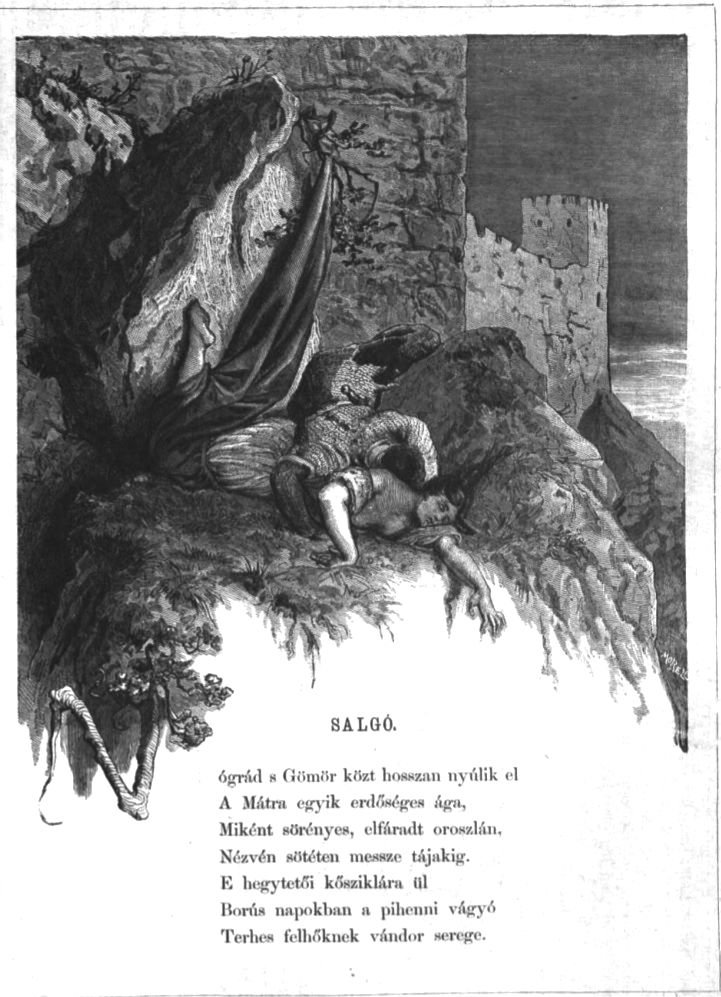
Salgó vára Petőfi versével a költő összes művének 1874. évi kiadásában
